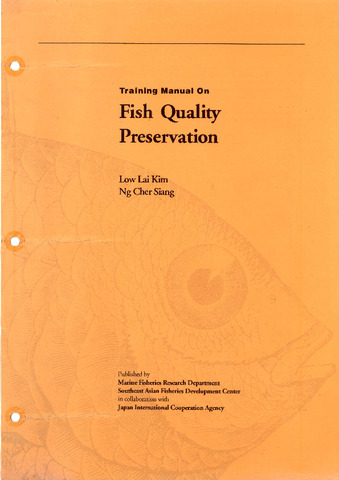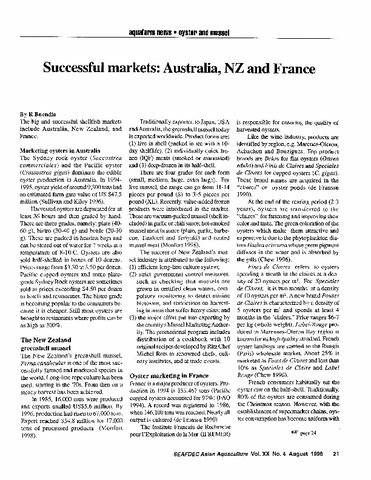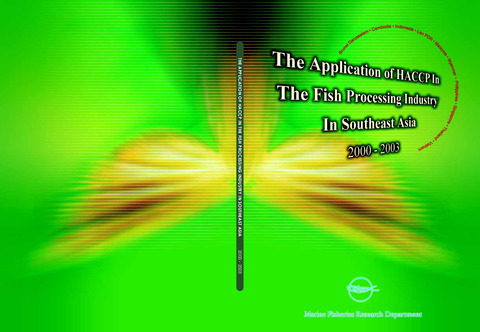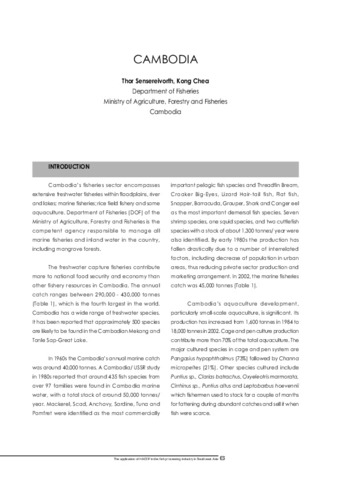Training manual on fish quality preservation
Share
Paglalarawan
The use of fish begins from the time the fish is harvested, moves through an often long distribution chain, before it is finally presented to the consumer for his eating pleasure. Along the way, some forms of handling and processing is essential in preserving the quality of the fish.
The quality preservation of fish also serves to ensure that its commercial value is not lost, and therefore is a key factor in making fish an internationally traded commodity.
Ultimately, fish is consumed by man for his well being and pleasure. It is this factor that dictates the true value of the fish. Hence, all the objectives of quality preservation and its practice throughout the industry should be geared towards this goal.
This manual represents a continuing effort by the Marine Fisheries Research Department to provide useful guides for technical personnel. The manual was prepared as a teaching tool for educators and trainers who need to conduct courses in fish quality preservation, primarily to fish retailers and seafood handlers.
The subject coverage in this manual is broad, touching on many concepts that have a bearing on fish quality preservation. On the other hand, the language used is deliberately kept as non-technical as possible, so that the manual user can effectively relate with his students.
The manual is divided into 2 Modules. Module I introduces the idea of Total Fish Quality. It covers the fundamental concepts of what constitutes fish quality, the changes occurring during fish spoilage and the value of fish as food. Module II introduces the two major forms of fish quality preservation, namely icing and freezing, identifies the role of hygiene and sanitation practices in fish quality preservation, and the practical requirements for quality preservation at retail outlets. The Module Objective, Lesson Objectives, and time allocations for each lesson and practical session are listed to aid the trainers in their programme planning. Trainee’s notes and visual aids are provided in Annex 1 and Annex 2 respectively.
Suggested Citation
Low, L. K., & Ng, C. S. (1992). Training manual on fish quality preservation. Singapore: Marine Fisheries Research Dept., Southeast Asian Fisheries Development Center in collaboration with Japan International Cooperation Agency.
Paksa
Mga koleksyon
- Manuals [4]
Related items
Showing items related by title, author, creator and subject.
-
Successful markets: Australia, NZ and France
Buendia, Romeo (Aquaculture Department, Southeast Asian Fisheries Development Center, 1998) -
The application of HACCP in the fish processing industry in Southeast Asia, 2000-2003
Yeap, Soon Eong; Hariono, Ira; Southeast Asian Fisheries Development Center, Marine Fisheries Research Department (Marine Fisheries Research Department, Southeast Asian Fisheries Development Center, 2003)At the 31st SEAFDEC Council Meeting in March 1999, it was proposed that a Japanese Trust Fund Project financed by the Fisheries Agency of Japan be established to support the programmes under the ASEAN-SEAFDEC Fisheries ... -
The application of HACCP in the fish processing industry in Southeast Asia, 2000-2003: Cambodia
Sensereivorth, Thor; Chea,Kong (Marine Fisheries Research Department, Southeast Asian Fisheries Development Center, 2003)Cambodia’s aquaculture development, particularly small-scale aquaculture, is significant. Its production has increased from 1,600 tonnes in 1984 to 18,000 tonnes in 2002. Cage and pen culture production contribute more ...





